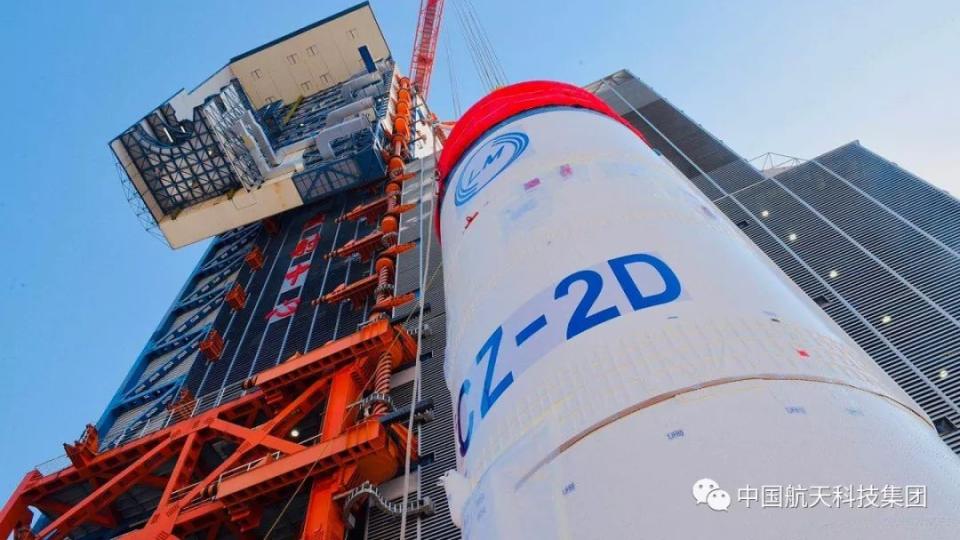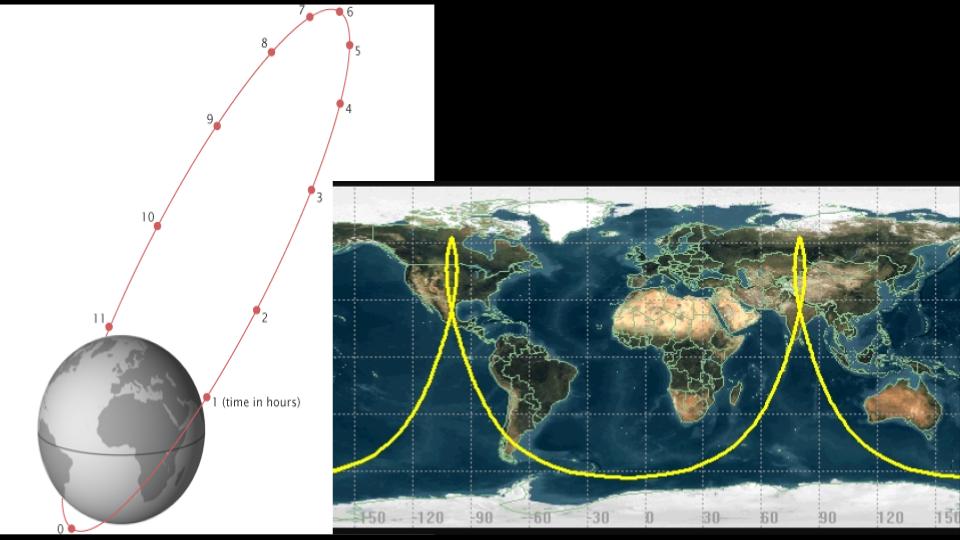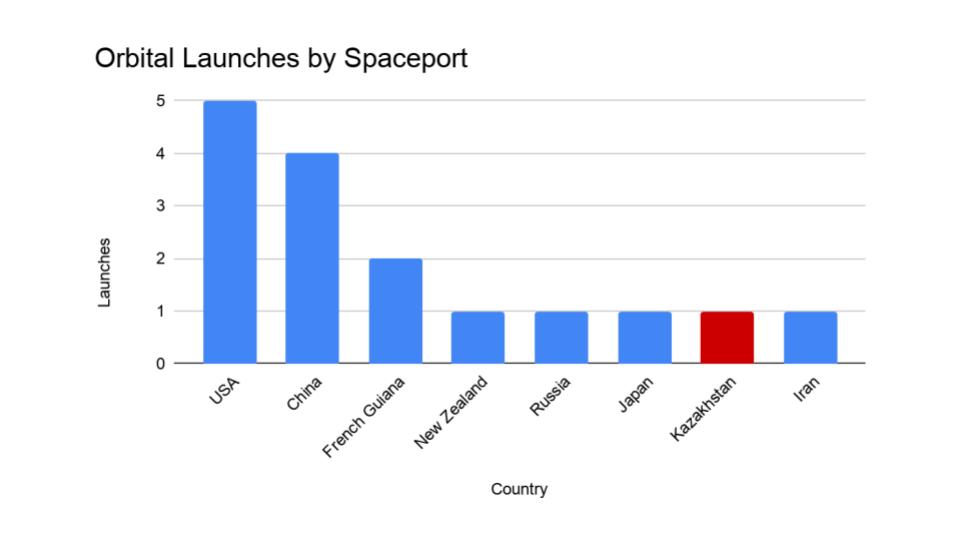There were only two launches this week! Annie chats about China’s rocket launch amid the coronavirus outbreak, Russia’s newest Meridian-M satellite, and Molniya orbits.

- XJS (C – F) (Rocket Launch Live) https://www.rocketlaunch.live/launch/20200216-unconfirmed
Our first launch of the week was in China. Amid the COVID-19 epidemic, a Long March 2D rocket took off carrying the XJS (C – F) mission on Wednesday, February 19 at 9:07 PM (UTC).

- China launches four ‘technology experiment satellites’ (SpaceFlightNow) https://spaceflightnow.com/2020/02/19/china-launches-four-technology-experiment-satellites/
- China makes unusual (for it) Long March 2D launch from Xichang with four XJS satellites aboard (SeraData) https://www.seradata.com/china-makes-unusual-for-it-long-march-2d-launch-from-xichang-with-four-xjs-satellites-aboard/
This launch took place at the Xichang Space Center in southwestern China and is interesting for a couple of reasons. For one, this launch center doesn’t usually perform launches of this particular rocket type and primarily handles launches of the Long March 3. Normally the Long March 2s fly from either Jiquan, or from the Taiyuan space centers, both in northern China. This is the first space launch for China since the recent coronavirus outbreak became worldwide news. Most of China’s various space facilities have taken a number of precautionary measures to limit the spread of the disease, such as employing body temperature monitors and requiring everyone to wear face masks.
As is often the case, there’s not a lot of other information about this launch. What we do know is that four technology demonstration satellites were carried into low Earth orbit. While not much is known about the specific operations of these spacecraft, CASC reports that they will mainly focus on testing new Earth observation technologies, as well as inter-satellite communications between the members of the constellation.
This isn’t the greatest quality launch footage, but it shows the command room and the workers inside. They are all wearing masks to conform with disease prevention standards. Annie felt that it was important to share the human side of this rocket launch.

Because China launches from inland rather than a coastline, debris fell to land. Guizhou Radio and Television reported no major casualties or property damage and that the recovery process was successful.

- Meridian-M 19L (Rocket Launch Live) https://www.rocketlaunch.live/launch/meridian-m-19l
- Soyuz launches Meridian satellite (Russian Space Web) http://www.russianspaceweb.com/meridian9.html
- Communication satellite launch (ISS-Reshetnev, in Russian) https://www.iss-reshetnev.ru/media/news/news-210220
- A source spoke about the threat of an accident at the launch of Soyuz-2 (RIA, in Russian) https://ria.ru/20200220/1565031246.html
- Russia delivers Meridian-M military communications satellite into orbit (TASS) https://tass.com/science/1122373
- Russia launches Soyuz rocket with Meridian-M military satellite from Plesetsk spaceport (TASS) https://tass.com/science/1122299
- Successful launch from the Plesetsk Cosmodrome (Roscosmos, in Russian) https://www.roscosmos.ru/28067/
- Overall launch coverage: https://spaceflightnow.com/2020/02/20/soyuz-rocket-launches-russian-military-satellite-after-one-month-delay/
Next up, on Thursday, February 20 at 08:25 UTC, the Russian Military launched a Soyuz-2 with the Meridian-M 19L satellite.

At first glance, it looks like this mission went completely nominally. THAT’S NOT THE CASE! This launch was originally scheduled for January 24th, but during pre-flight checks it was discovered that the Soyuz third stage — the upper of the two center core stages — had an electrical problem. After inspection, technicians decided to replace the third stage ENTIRELY rather than try to repair the one in place. That meant rolling the rocket back to its assembly building, UNSTACKING ALL OF THE PARTS, then bringing the new third stage in, and putting it all back together again!
This combined with the launch windows available for the spacecraft’s intended orbit delayed launch by almost a month. The Soyuz 2.1a rocket with a Fregat upper stage and the new third stage finally took off from the Russian military’s Plesetsk Cosmodrome, located about 800 km / 550 mi north of Moscow. The launch successfully put the spacecraft into a highly elliptical, highly inclined orbit. I’ll talk more about that orbit in a second.
The satellite launched last Thursday was the second of an upgraded batch of Meridian Ms, the 1st of which was launched back in 2018. They are designed to work within the Russian military’s Integrated Satellite Communications System (ISCS), which provides uplink and downlink support for services and satellite tracking and control via Raduga and Globus satellites in geosynchronous orbit. A total of nine Meridian satellites have been launched since 2006; seven have apparently been successful, while one was deployed into the wrong orbit in 2009, and another was lost during a launch failure in 2011.
Space is hard, people: space is hard.
In any case, the new satellite is part of a system that will help allow, among other things, broad, persistent coverage of high Arctic areas. The Russian military suggested that among other possible missions, Arctic ice reconnaissance planes communicating voice and survey data back to distant ground stations could be done via this satellite network.
<———————>

RIGHT: An example ground track for a Molniya orbit. Most of a Molniya satellite time will be spent over the small loops in the ground track, giving excellent views of the higher latitudes. Images from https://en.wikipedia.org/wiki/Molniya_orbit
Okay, on to that odd orbit:
Normally when we cover satellite launches, the satellites involved are put into mostly circular orbits. The ISS, Starlink, and GPS satellites are all placed in circular or near-circular orbits to accomplish their missions. However, the Meridian satellites are placed in a Molniya orbit, which is highly elliptical and highly inclined.
And here, when we say elliptical we don’t mean a tiny bit egg-shaped: we’re straight into “severely stretched” territory, with altitudes ranging from 600 to nearly 40,000 km above Earth! Take that long oval of an orbit and place it at a 63 degree angle relative to Earth’s equator, and you get the highly inclined orbit. But why would you even do this to a satellite?
Thanks to orbital mechanics, a Molniya orbit is uniquely suited to providing useful satellite coverage for Earth observation and communications services needed by ground terminals operating in high northern latitudes. Those areas are not easily serviceable from satellites in the typical geosynchronous orbits over the equator because any antenna you’re using would be pointing at such a low angle that a small hill could easily block the path of the signal. And even though polar orbiting satellites can see these same latitudes, they only have coverage of any given spot for several minutes at a time. The Molniya orbit is inclined in such a way that the desired areas are not only clearly visible, the satellite is able to “pause” for a time at its highest point thanks to orbital mechanics, which provides several hours of uninterrupted coverage that LEO and GEO satellites simply can’t match.
To wrap things up, here’s a running tally of a few spaceflight statistics for the year.
So far, only one toilet has burned up in the atmosphere. There are 245 new satellites in orbit, with 231 of those launched by 16 rockets.
By spaceport, here’s the breakdown of those rocket launches:

- USA: 5
- China: 3
- French Guiana: 2
- New Zealand: 1
- Russia: 1
- Japan: 1
- Kazakhstan: 1
- Iran: 1
Your useless space fact for the week comes from refsmmat, who shared that all payloads carried by the Space Shuttle had to be balanced by carrying lots of lead ballast into orbit and bringing it back again. That lead ballast served no other purpose.
<———————>
And that rounds out our show for today.
Thank you all for listening. Today’s script was written by Annie Wilson and Dave Ballard. The Daily Space is produced by Susie Murph, and is a product of the Planetary Science Institute, a 501(c)3 non profit dedicated to exploring our Solar System and beyond. We are here thanks to the generous contributions of people like you. Want to become a supporter of the show? Check us out at Patreon.com/cosmoquestx


 We record most shows live, on Twitch. Follow us today to get alerts when we go live.
We record most shows live, on Twitch. Follow us today to get alerts when we go live.